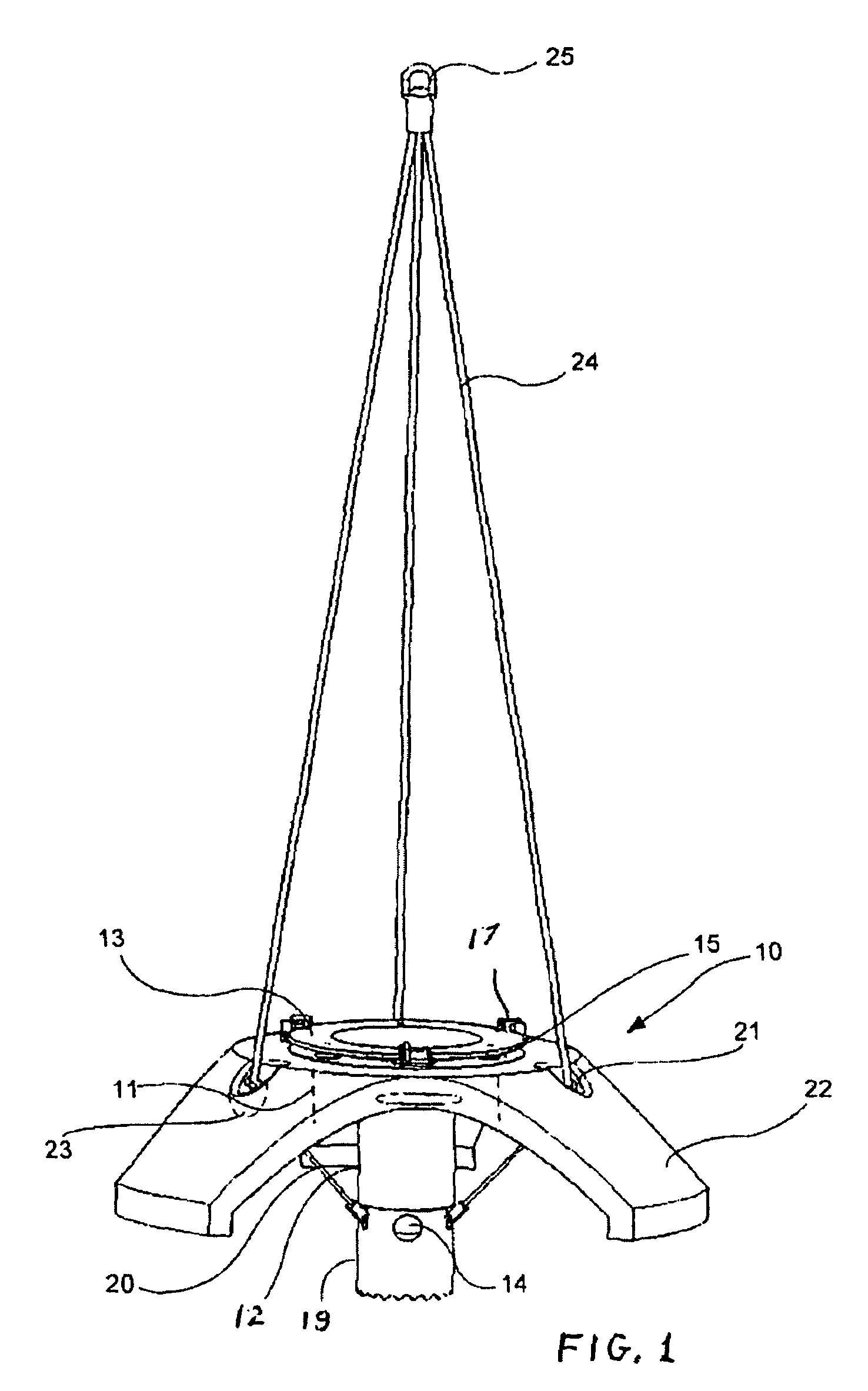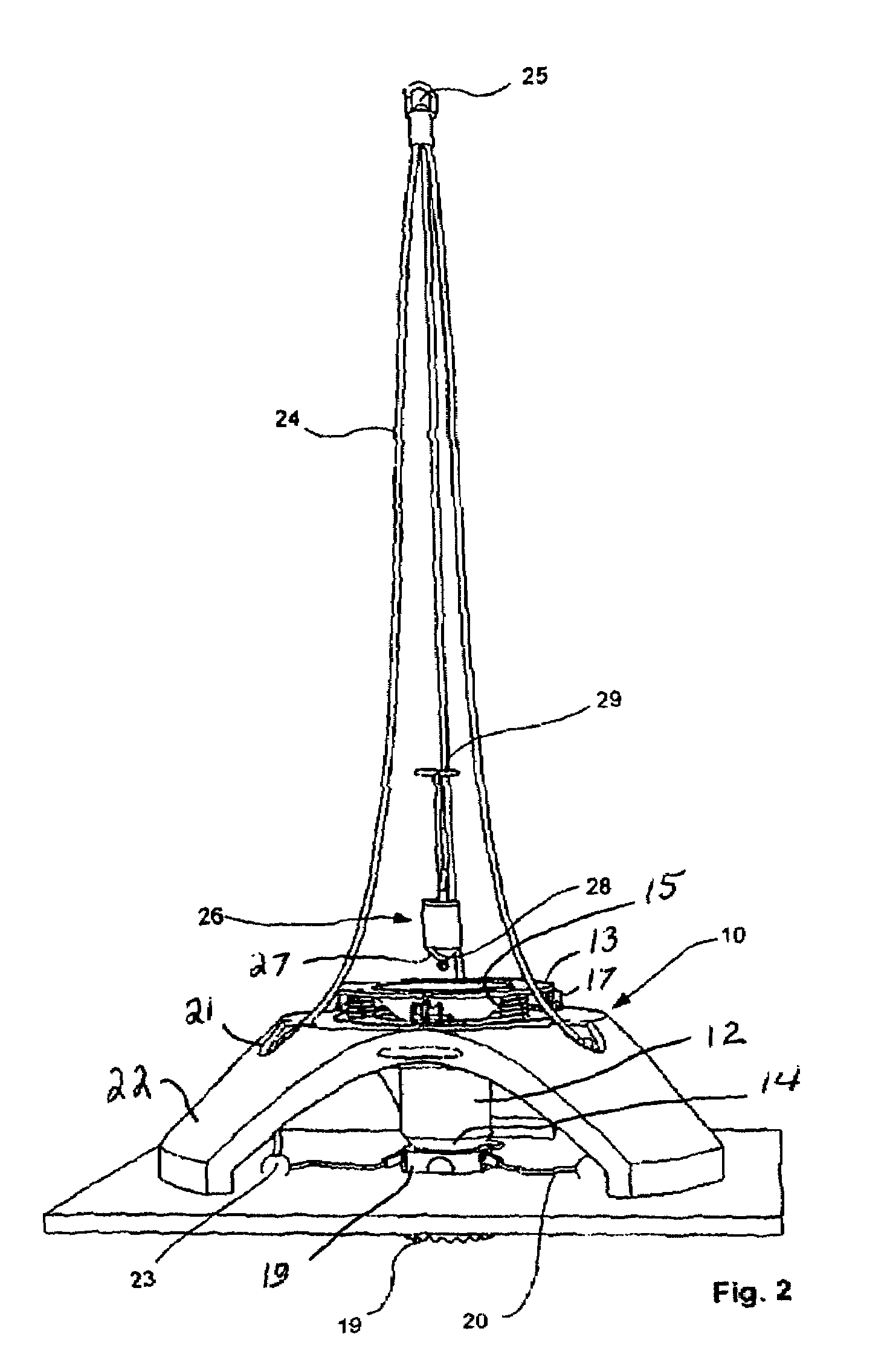Sensor arrangement and method for the installation and moving of this
a technology of sensors and moving parts, applied in seismology, seismology, instruments, etc., can solve the problems of increasing the installation time of sensors, requiring the use of large equipment, requiring energy consumption, and requiring large equipment, etc., and achieving the effect of reducing the installation time, reducing the difficulty of installation, and reducing the number of sensors
- Summary
- Abstract
- Description
- Claims
- Application Information
AI Technical Summary
Benefits of technology
Problems solved by technology
Method used
Image
Examples
Embodiment Construction
[0034]Referring to FIGS. 1–3, a sensor arrangement or sensor node is shown, with a carrier arrangement or carrier in the form of a three-legged stand 10 with a vertical main axis, made of, for instance, reinforced concrete. In a hole 11 along the main axis, a tube-shaped drawback 12 is placed, with a projection 13 on the top and a tapered, open constriction 14 at the bottom. The drawback 12 is held by four helical springs 15 (FIG. 3), placed between the projection 13 and recesses 16 in the top of the stand 10. At the starting point, the drawback is biased downwardly against the springs, by releasable locking lugs 17, which are secured to brackets 18 on the top side of the stand 10.
[0035]At the lower edge of the tapered constriction 14, a tube-shaped blade 19 with a vertical main axis is placed in mechanical contact with the constriction 14. The shape of the top of the blade 19 is adapted to the drawback 12, the main axes are coincident and relative rotation between these parts are h...
PUM
 Login to View More
Login to View More Abstract
Description
Claims
Application Information
 Login to View More
Login to View More - R&D
- Intellectual Property
- Life Sciences
- Materials
- Tech Scout
- Unparalleled Data Quality
- Higher Quality Content
- 60% Fewer Hallucinations
Browse by: Latest US Patents, China's latest patents, Technical Efficacy Thesaurus, Application Domain, Technology Topic, Popular Technical Reports.
© 2025 PatSnap. All rights reserved.Legal|Privacy policy|Modern Slavery Act Transparency Statement|Sitemap|About US| Contact US: help@patsnap.com



